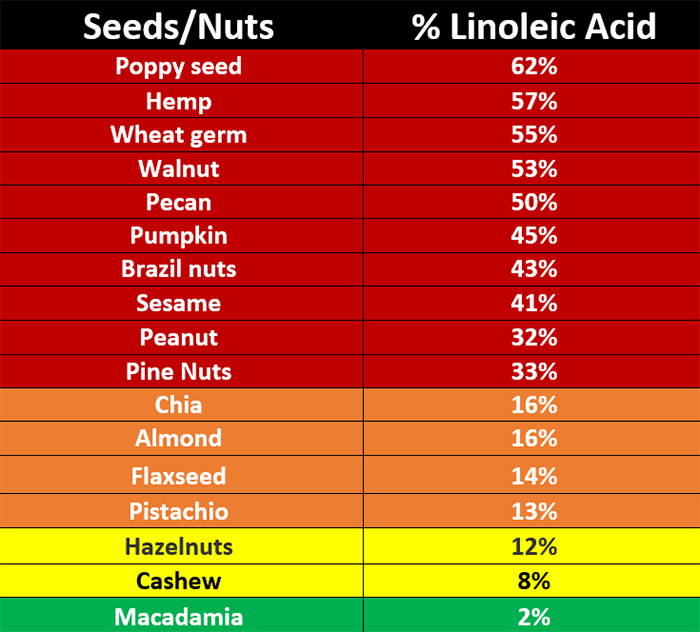Food allergies are a growing health concern that affects about 6% of American adults and children, according to the U.S. Centers for Disease Control and Prevention.1 Among the leading food allergens that pose a significant threat are peanuts, putting nearly 1.5 million Americans under the age of 18 at risk of life-threatening reactions like anaphylaxis.2
The American Academy of Pediatrics previously recommended parents delay the introduction of peanuts to their children until age 3. However, they discontinued this advice in 2008, and in 2019, they updated their guidelines to acknowledge that avoidance may not help prevent food allergies. In fact, there’s growing evidence to support the notion that early exposure to peanuts could be more helpful in allergy prevention later in life.3
A May 2024 study4 published in the journal NEJM Evidence further reinforces this assertion. “This is the first study to establish long-term oral tolerance as a protective strategy against peanut allergy,” Gideon Lack, professor of pediatric allergy at King’s College London and one of the authors of the study, told Fox News.5 But while this approach may sound promising, is it really the right choice for your child?
Series of Studies Show the Potential Benefits of Early Peanut Exposure
The featured study, known as the Learning Early About Peanut Allergy (LEAP)-Trio trial, builds on the results of the original LEAP clinical trial and its follow-up, the LEAP-On study. The initial LEAP trial6 in 2015 involved more than 600 infants between 4 and 11 months of age, who were considered at high risk of developing peanut allergies due to existing egg allergies or severe eczema. As reported in a news release from the National Institutes of Health:7
“During the LEAP trial, half of the participants regularly consumed peanut products from infancy until age 5 years, while the other half avoided peanut during that period. Researchers found that early introduction of peanut products reduced the risk of peanut allergy at age 5 by 81%.
Subsequently, children from LEAP who participated in LEAP-On were asked to avoid eating peanut products from ages 5 to 6 years. Investigators found that most children from the original peanut-consumption group remained protected from peanut allergy at age 6.”
“Peanut allergy develops very early in most children between 6 and 12 months of life. If you want to prevent a disease this needs to be done before the disease develops,” Lack told CNN. He explains that this phenomenon, known as oral tolerance induction, shows that early exposure to allergens can train the immune system to resist allergies later in life.8
To follow up with these findings, the 2024 LEAP-Trio study9 sought to determine if the protective benefits of early peanut consumption would extend into adolescence. Researchers followed up with 508 participants from the original LEAP study, now around 12 years old. They found that peanut allergy remained “significantly more prevalent” in the peanut avoidance group, with 15.4% of them being allergic.
In comparison, only 4.4% of those who consumed peanuts early were allergic. These findings revealed that introducing peanuts early in life could lower the risk of peanut allergies in adolescents by 71%.10
“The key finding of this study is that early consumption of peanut, starting early in the first year of life, confers long-term protection against peanut allergy all the way into adolescence, even without continued consumption of peanut beyond the age of 5 years,” Lack further explained to Fox News Digital.11
Tiny Amounts of Peanut Butter May Be Beneficial, But Here’s the Catch
Dr. Jeanne Marrazzo, director of the U.S. National Institute of Allergy and Infectious Diseases (NIAID), emphasized in a news release12 that the findings of the LEAP-Trio study “should reinforce parents’ and caregivers’ confidence that feeding their young children peanut products beginning in infancy according to established guidelines can provide lasting protection from peanut allergy.”
“If widely implemented, this safe, simple strategy could prevent tens of thousands of cases of peanut allergy among the 3.6 million children born in the United States each year,” Marrazzo added.
Lack emphasizes that when introducing peanuts to infants’ diets, it’s ideal to use smooth peanut butter mixed into a puree to avoid choking hazards. The sooner a child is exposed to food allergens, the better. However, they must be developmentally and neurologically ready to handle solid foods, meaning they can chew and swallow without a risk of choking. He discourages introducing solids to infants before 3 months of age.13
Dr. Purvi Parikh, an allergist and immunologist at NYU Langone in New York and spokesperson for the Allergy & Asthma Network, told CNN similar recommendations. She advised that introducing peanuts to children who are at low risk for allergies can start at 4 to 6 months old under a pediatrician’s guidance. However, children with severe eczema and egg allergy should see an allergist before being given peanuts.14
“Since babies cannot have solids yet it is recommended for it to be a thin consistency similar to breast milk or formula and can be mixed into it to avoid any choking and can start with a small amount and slowly increase as tolerated every 3 to 4 days,” Parikh added.15
However, although early peanut introduction could be helpful for allergy prevention, there’s an important caveat you have to keep in mind about peanut butter — it contains high amounts of polyunsaturated fatty acids (PUFAs).16 So while it may be beneficial in tiny amounts for lowering the risk of peanut allergies in children, it’s ideal to minimize PUFA consumption overall for optimal health.
Excessive PUFA Consumption Can Wreck Your Child’s Health
PUFAs, particularly the omega-6 fat linoleic acid (LA), are abundant in seed oils used in cooking, as well as seeds and nuts, as you can see in the table below. Peanuts, in particular, are 32% linoleic acid.

To be clear, LA is only toxic when consumed in excessive quantities. Unfortunately, the vast majority of people nowadays consume far more LA than the ideal amounts, compromising their cellular and mitochondrial function.
Even children and adolescents are at risk of consuming excessive LA through foods containing vegetable oil and ultraprocessed food items.17 One study18 showed that PUFA consumption in children increases with age, with toddlers consuming 2.5 to 7.9 grams per day on average, while adolescents consume 5.4 to 17.9 grams.
That means the average toddler is already eating more LA than the recommended 2 to 5 grams. By the time they’re in their teens, they may be consuming more than three times the upper limit.
One of the reasons PUFAs are problematic is that they’re easily damaged by the oxygen species generated from cellular energy production. This damage leads to the formation of advanced lipoxidation end products (ALEs), which in turn generate dangerous free radicals that can damage your cell membranes, mitochondria, proteins and DNA. Lipid oxidation is also implicated as the primary reason for the decreased shelf life of peanut butter.19
Even more concerning is that PUFAs are integrated into the cell membranes and can stay there for five to seven years. They are also missing more than one pair of hydrogen atoms, making them highly susceptible to oxidation, which causes the fat to break down into harmful metabolites such as OXLAMs (oxidized LA metabolites).
These ALEs and OXLAMs then go on to cause mitochondrial dysfunction, which is a hallmark of most all chronic diseases. For these reasons, I recommend limiting your LA intake to less than 5 grams, or even better, less than 2 grams per day. To learn more about the potential consequences of excess linoleic acid consumption on your or your child’s health, check out my article “Linoleic Acid — The Most Destructive Ingredient in Your Diet.”
Limit Your Child’s Peanut Butter Intake
To reiterate, if you’re thinking about introducing peanuts to your child early on to potentially reduce their risk of peanut allergy, I suggest offering it only in tiny amounts to avoid going overboard on their PUFA intake. According to the United States Department of Agriculture (USDA),20 100 grams of peanut butter contains 9.73 grams of LA — that makes around 1.6 grams of LA per tablespoon of peanut butter.
While this may seem like a small amount, remember that linoleic acid is pervasive in our diet. Even small amounts of LA found in nuts and nut butters can easily push your child’s daily LA intake beyond the ideal threshold, contributing to potential health issues down the line.
The Food and Agriculture Organization (FAO) and World Health Organization (WHO) recommend that LA should make up at least 3% of total energy intake for children aged 1 to 2 years, and at least 2% for children older than 2 years.21 My recommendation is to keep LA intake to less than 5 grams per day. Once the daily 5-gram mark is reached, the perishable double bonds of LA will begin to oxidize and generate dangerous free radicals.
Nourish Your Child With the Right Foods
Since the protective effects of early peanut introduction are shown to extend into adolescence without the need to eat peanut products after age 5,22 there’s no need for you to consistently pack high-PUFA peanut butter sandwiches for your child’s school lunches. Instead, focus on nourishing your family with health-boosting foods, such as the ones listed in the table below.
But before you add healthy carbs to your child’s diet, they need to have optimal gut health. If their gut health is impaired, eating fibrous fruits and starches will only feed the pathogenic bacteria in their gut. So, if your child’s gut health is less than optimal, start by eliminating as much LA from their diet as possible and introduce healthy carbs slowly, starting with fruit juices.
|
Healthy carbs |
|
|
Fresh fruit juices, such as sweet organic orange juice (not bitter) |
In season, ripe fruits |
|
Maple syrup or honey |
Well-cooked veggies (for micronutrients and fiber) |
|
Well-cooked roots and tubers |
White rice |
|
Masa harina |
Sourdough bread |
|
Well-cooked beans (occasionally) |
|
|
Fats |
|
|
Butter, ghee and tallow |
Low-PUFA eggs |
|
Raw milk and cheese |
Organic chocolate |
|
Coconut oil |
|
|
Proteins |
|
|
Bone broth |
Ground beef or bison |
|
Gelatinous cuts of meat, such as beef shank, oxtail, pork hock or chicken gizzards |
Chicken wings, drumsticks and thighs from properly fed chickens |
Article imported via RSS feed from Mercola.com
RSS Article Source: https://articles.mercola.com/sites/articles/archive/2024/07/02/babies-peanut-allergy.aspx


